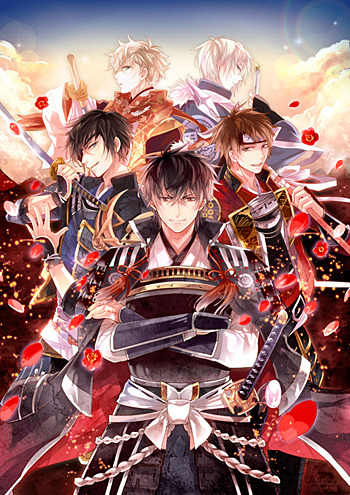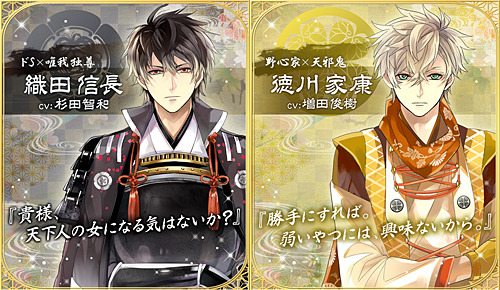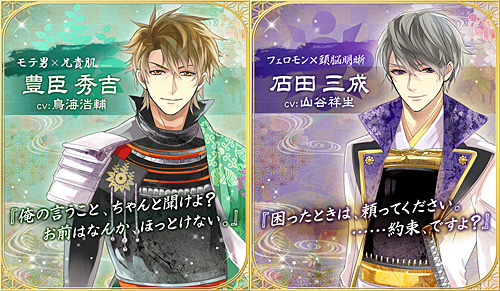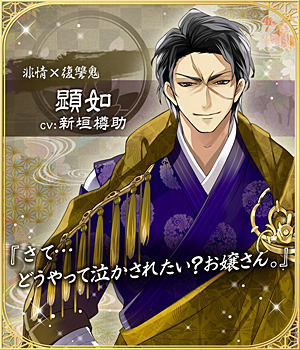#and they get a girl to play kamanosuke
Explore tagged Tumblr posts
Photo


7h Ry☆/ 辻 諒 :The last show of『BRAVE10~燭~』has ended. To those who supported us、thank you very much. I’m so happy I was able to perform and live in the world of Brave 10 as Kamanosuke. I’m curious about whether Kamanosuke is a man or a woman #BRAVE10燭
#brave 10#tsuji ryo#辻諒#Yuri Kamanosuke#if there's another play#(which i doubt tbh)#and they get a girl to play kamanosuke#I'll straight up die#that'd be so awesome#I'm 99% sure bihh is a boy#but you never know :// maybe at the end kairi can be like lol nah she's a girl#but ANYWAYS#Everyone is like I wonder if ryo-kun is a man or a woman too#and i look forward to the continuation#i thought you were a boy what if it's actually a girl?!#also?? i'm curious but kamanosuke is still kamanosuke?? that fucked me up#that's the kind of support i want to see#maybe they included something else in the play? :/ because going by the manga he def is a boy#but idk man#idk how to read manga tbh#okay so one of the reasons why I wanted to see cutiebutt as yuri is because yuri is so fucking loud and rude (and sometimes even annoying)#he is so selfish and honestly the only way to describe him is histrionic lol#and yk i'm never seeing cutiebutt like that yeah he is loud and mildly annoying at times but i find that endearing yk#but he also is such a funny character? honestly the only times I laughed in the anime/manga were the ones where he opens his mouth#he is so ... gullible and not stupid... but .... i don' want to call him stupid#but he just doesn't understand the reality of the situation that often yk qww#like? he had to be locked inside a chest because he wanted to be the first one to fight in the battle! and saizo fucking sat on it to stop h#him from breaking out!!#also as crazy as he looks; I felt he was so him by not devoting himself to sanada unlike the others that to some extend bonded with him#in this essay why yuri's selfishness is a great quality of him will be explained
1 note
·
View note
Note
One of the other blogs here told me that Cybird's game Ikémen sengoku has the same characters/same era as slbp, so I was wondering if you had any brief historical info for a young pleb such as myself 👀
Cybird’s Ikemen Sengoku has a similar premise to their game Destined to Love: you’re out somewhere minding your business and then you mysteriously do the time warp again.
The starting point of the Sengoku period can vary depending on who you’re talking to, but for most it’s 1467 when the Onin war (1467-1477) broke out over who would be next in line after shogun Ashikaga Yoshimasa. And for others, it’s 1490, the year Hosokawa Katsumoto, a deputy of the shogun, snatched up power.
At this point, the samurai have long since stepped in to keep order. The introduction of the first Europeans to arrive in Japan, the Portuguese, changed how battles were fought. In particular, was how clans Oda and Tokugawa combined forces, using their European arquebuses to decimate the Takeda by staggering reload and firing times. In no time at all, Japanese smiths were able to reproduce the mechanism in the muskets and manufactured similar firearms.
The Portuguese also traded goods from China with the Japanese, such as silk, porcelain, soap and tobacco, among other things, which was forbidden by the emperor due to the many attacks by pirates. This was called the Nanban trade.
By the way, the Portuguese slave trade also extended to Japan, with the Portuguese purchasing slaves and sending them to other nations including Portugal. Large amounts of Japanese women, and girls as well, were purchased for sex and sold as slaves.
Toyotomi Hideyoshi was livid with this practice, wanted the enslavement of his people to end. He wanted the slaves who were sold to be returned, and wrote a letter to Gaspar Coelho, a Portuguese missionary and leader of the Christian contingent in Japan. Hideyoshi had him scared up in the middle of the night to answer for it. Hideyoshi made it clear that Coelho and the others were to get out of Japan.
Unfortunately, it didn’t end there, and there is so much going on around this time, so instead let’s go to the men of Cybird’s Ikemen Sengoku:

Click here for eargasm. I have no idea what Nobunaga and Mitsuhide said, but they can say it again and again.
There are three men who are considered to have unified Japan. They are, in order: Oda Nobunaga, Toyotomi Hideyoshi, and Tokugawa Ieyasu.
Before his death in 1582, Nobunaga was able to conquer a third of the daimyō. In 1590, Hideyoshi unified all of Japan and became its first leader. And in 1603, Ieyasu set himself up as shogun, founding the Tokugawa shogunate
A famous idiom is “Nobunaga pounds the national rice cake, Hideyoshi kneads it, and in the end Ieyasu sits down and eats it.”
Below: Oda Nobunaga on the left and Tokugawa Ieyasu on the right:

Oda Nobunaga was the second son of Oda Nobuhide and his legitimate successor, being the oldest legitimate son. He had a penchant for ignoring his societal rank and enjoyed playing with children his age across the social strata.
With the death of his father, the were a power struggle in the Oda clan, which was under Shiba Yoshimune to begin with. When Nobunaga stepped in to rule, his uncle, Oda Nobutomo, had Yoshimune murdered for his support of Nobunaga.
Nobunaga would spend much of his live trying to attain, maintain, and exert military control in his attempt to unify Japan.
He found himself betrayed many times, but it was his trusted ally Akechi Mitsuhide who finally got the drop on him and it is not known if Nobunaga was killed in Akechi Mitsuhide’s ambush or if Nobunaga committed seppuku. This was known as the Honnō-ji incident.
Tokugawa Ieyasu spent much of his young life as a hostage of both the Oda and the Imagawa.
Nobuhide proposed killing Ieyasu, who was 5 at the time, if Tokugawa Hirotada, Ieyasu’s father, did not cut ties with the Imagawa clan, but Hirotada refused. Rather than killing Ieyasu, Nobuhide kept him as a hostage of the Oda clan and sent him to Nagoya where he remained in a temple for three years.
With the murder of Hirotada by his own men, and Nobuhide succumbing to an illness, Oda Nobunaga took power. In agreement with Imagawa Sessai, who promised to draw his armies back if he was given Ieyasu, Nobunaga handed the young boy over, thereby making him a hostage yet again. This time Ieyasu was taken to Sunpu where he remained from ages 9-13.
While he did have occasional conflict with the Oda clan, Ieyasu would become one of Oda’s strongest allies.
After becoming shogun, Ieyasu made his power inheritable, and in doing so, established a military government that would last for almost three hundred years.
Cybird’s Destined to Love features his descendant Tokugawa Yoshinobu (Keiki), the last shogun Japan would see.
Below: Takeda Shingen on the left and Uesugi Kenshin on the right

A descendant of the Minamoto clan, Shingen, who was given the name Harunobu at his coming of age ceremony, would be called Minamoto Harunobu in imperial records. He received the dharma name Shingen after the completion of his Buddhist training. The kanji for Shingen can also be pronounced Harunobu, so in a sense, he received the same name twice.
Ashikaga Yoshiharu, the 12th shogun, gave a character from his name to Shingen, which was an honor, and Shingen attained the second one through his own merit.
We don’t know the exact reason why Shingen, the firstborn son, rebelled against his father, but it’s thought that his father, Nobutora, may have wanted to give power to his second son, Nobushige. Nobutora was forced into retirement and sent away to be under the watchful eye of the Imagawa. This formed an alliance between the Imagawa and the Takeda.
Strife in the Takeda clan did not end there, as not only his first cousin, but his own son plotted to take his life.
Shingen’s feud with Kenshin began with Shingen’s attempt to gain control of Shinano. The warlords in the area were already involved in a battle and, making the most of the confusion, Shingen did not have much trouble in winning.
Upon adoption into the Uesugi clan, Nagao Kagetora changed his name several times before becoming known as Uesugi Kenshin. He had control over the Echigo province, which was afforded a better standard of living due to Kenshin’s increasing the growth of local trade.
He believed in Bishamonten, the Buddhist god of war, and was even called his avatar by his followers.
Legend has it that Kenshin burst into Shingen’s war ten on horseback and attacked him. Caught off guard, Shingen successfully parried Kenshin’s sword with his war fan.
Below: Sanada Yukimura on the left and Sarutobi Sasuke on the right

Yukimura’s actual name is Nobushige, after Shingen’s younger brother. Historically, he was never referred to as Yukimura. Novels and plays written about him in the Edo period refer to him as Yukimura, though.
Although the Sanada army was small, they succeeded in winning many battle. With the death of his uncles, his father inherited the clan. However, with the destruction of the Takeda clan, the Sanada surrendered to Oda.
After the Honnō-ji incident, the Sanada had no masters, as so tried to find their place serving a number of clans including the Uesugi, Hōjō, and Tokugawa, before becoming vassals of the Toyotomi.
Yukimura himself was known by many colorful names including The Crimson Demon and Number One Warrior in Japan, among others.
Sarutobi Sasuke was not a real person. He is part of the fictional Sanada Ten Braves, who helped Yukimura in battle, in novels written by Sanada Sandaiki.
The fictitious Sanada Ten Braves, are:
Sarutobi Sasuke
Kirigakure Saizo
Miyoshi Seikai
Miyoshi Isa
Anayama Kosuke
Unno Rokuro
Kakei Juzo
Nezu Jinpachi
Mochizuki Rokuro
Yuri Kamanosuke
Below: Toyotomi Hideyoshi on the left and Ishida Mitsunari on the right

Upon Nobunaga’s death, Hideyoshi was successful in ending the warring states. Although he rose through the ranks from humble beginnings, he placed restrictions on who could become a samurai after gaining power. The period of his rule is called the Momoyama period and is named after his castle.
He is responsible for the death by crucifixion of twenty-six martyrs, three of whom were young boys.
Ishida Mitsunari, whose childhood name was Sakichi, was a military commander and leader of the bureaucrats under Hideyoshi.
Below: Akechi Mitsuhide on the left and Date Masamune on the right

Mitsuhide was the first under Nobunaga to receive a castle. After betraying Nobunaga, Mitsuhide’s rule as shogun lasted only 13 days before his death. He is believed to have been killed, although there is a rumor that he lived out his life as a monk.
Masamune became the leader of his clan at the age of 17 following his father Terumune’s retirement.
Under Hideyoshi, the new ruler, Masamune found the size of his land reduced and even feared execution. He dressed in his finest clothes expecting to die, only to have Hideyoshi say that he may be of some use.
At the behest of Katakura Kojuro, Masamune supported Ieyasu, who in turn, increased the size of Masamune’s land.
A patron of the arts, Masamune founded the city of Sendai. Due to his ambitious and aggressive nature, he was sometimes viewed with suspicion, but he served both Hideyoshi and Ieyasu faithfully.
Below: Kōsa, also known as Hongan-ji Kennyo (or Ken’nyo)

The Hongan-ji refers to several things. Ken’nyo, as Cybird spells it, was an Abbott who Shingen turned to for aid against his rivals, Oda, Tokugawa and Uesugi.
40 notes
·
View notes